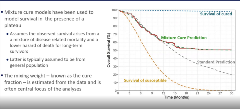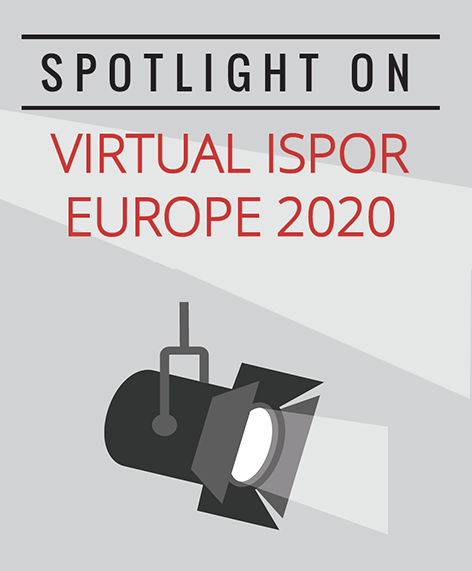The Meaning and Value of “Cure” Beyond Statistical Survival Models
Koen Degeling, PhD, MSc, BSc, Cancer Health Services Research, The University of Melbourne, Melbourne, Australia
Results from trials on regenerative therapies have suggested that these treatments may cure some patients based on plateaus in survival curves. These promising outcomes give hope to patients and clinicians, but the concept of “cure” also poses analytical challenges and raises questions on how the value of such therapies should be measured. This issue panel (Figure 1) discussed the meaning and value of cure in oncology from an industry, health technology assessment (HTA), and patient perspective.
Figure 1. Session Panelists.

When is a Cure a Cure?
The meaning and use of the term “cure” depends on the disease area, the treatment used, and who you ask. Ágnes Benedict, MSc, Senior Research Leader, Evidera Inc, highlighted that oncologists are unlikely to ever tell a patient they are cured, though cure is frequently discussed in the cancer literature. In the field of genetic diseases, however, the term “cure” seems to be avoided, whereas it is regularly used in the context of infectious diseases.
The session moderator, K. Jack Ishak, PhD, Evidera, St-Laurent, Quebec, Canada, pointed out that in oncology, the concept of cure has been mostly discussed from a statistical point of view, suggesting that the “cured proportion” represents a group of patients for whom the risk of mortality approaches that of the general population from a certain point in time (Figure 2). This presents a population-level view. Whether specific individuals or even what type of individuals are cured is still poorly understood.
Figure 2. Mixture Care Models.

“There is a strong intuition that the value of a curative therapy is larger than what is currently measured, but it is difficult to pin down.”—Ágnes Benedict, MSc
Patient-reported outcomes used in HTAs originate from a precurative treatment era and are, therefore, more appropriate for evaluating a chemotherapy regimen rather than therapies like CAR-T. Furthermore, studies mostly measure patients’ quality of life over a relatively short period of time.
Cure as an Outcome of a Pathway
From a patient perspective, the rather abstract numbers of “cure proportions” have a very different meaning. They represent miracles. Patient advocate Bettina Ryll, MD, PhD, Founder and Past Chair Patients Advocates Working Group, Melanoma Patient Network Europe & European Society for Medical Oncology, added that there is value in having options. Cure should be considered as the outcome of a care pathway rather than as an isolated concept.
“Cure should be considered as the outcome of a care pathway rather than as an isolated concept.” —Bettina Ryll, MD, PhD
Looking at Quality of Life Gains
From a health economics perspective, Nicholas R. Latimer, MSc, PhD, School of Health and Related Research at the University of Sheffield, emphasized that the concept of cure in isolation is not the most important. It is the accumulation of survival, quality-adjusted life years (QALYs), and costs that needs to be modeled accurately. This raises important questions regarding whether quality of life is fully restored for “cured” patients, whether these patients are more likely to have comorbidities that impact their life expectancy, and whether they may utilize more healthcare resources compared to the general population. “I do think it makes sense to be thinking about cure models in HTA given the characteristics of new treatments, but we don’t have to assume 'cure' to model large QALY gains and perhaps it is more appropriate to refer to 'long-term survivors.'"
When the Data Doesn’t Reflect the Reality
Several studies have demonstrated sufficiently long follow-up data are required to accurately estimate the cured proportion and, consequently, the need for mature data on overall survival has been highlighted. Ryll, however, emphasized that asking for mature survival data fails to recognize that patients will die from the disease in the meantime. Furthermore, the current focus on median survival insufficiently reflects the benefit for the patients who survive for a long time.
Although curative therapies clearly pose challenges beyond analytical questions, the panel concluded by highlighting the opportunity for early HTA dialogues to enable effective models for early access combined with evidence generation. This could not only include capturing survival outcomes in clinical registries, but also ensure questions that are relevant to patients and clinicians are answered.

